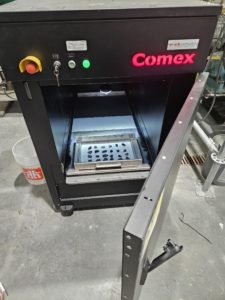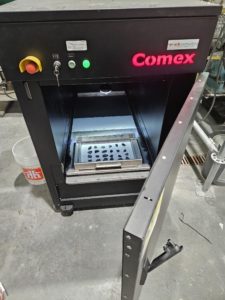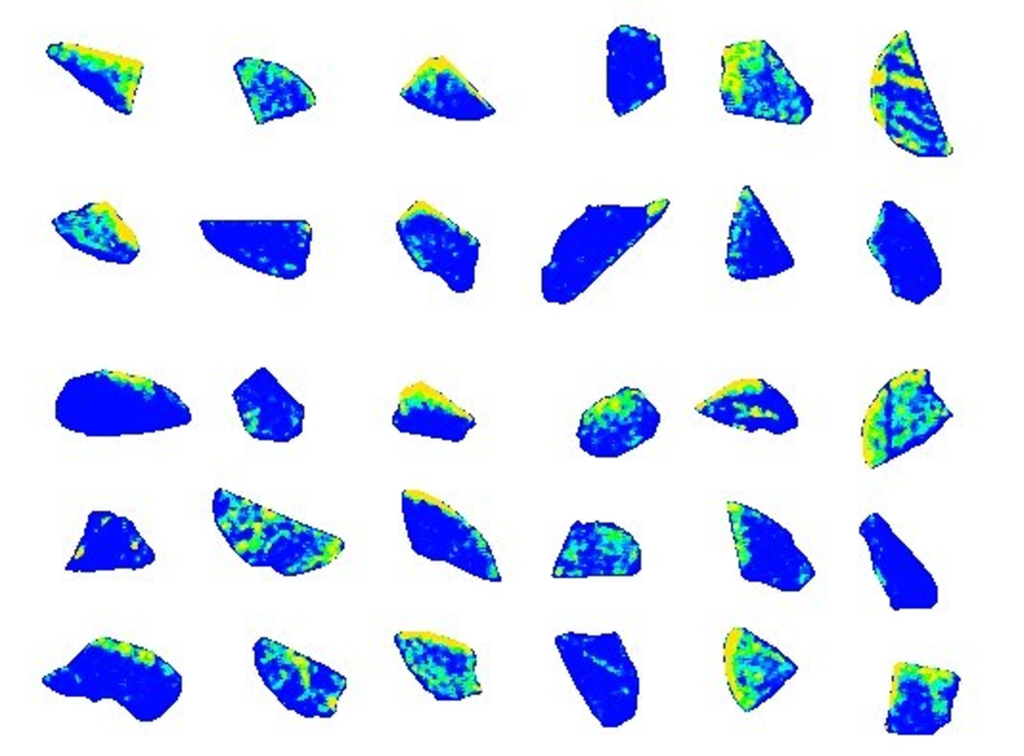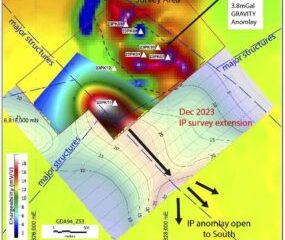Base Metals
SRK Consulting, Base Metallurgical Labs tackling pre-concentration amenability
In this first of a three-part series of articles on pre-concentration in the mining space, SRK’s Adrian Dance outlines a new vendor-agnostic, lab-based…

In this first of a three-part series of articles on pre-concentration in the mining space, SRK’s Adrian Dance outlines a new vendor-agnostic, lab-based testing process that could have huge ramifications for a sector in need of guidance and strategy.
Stay tuned for part two in the series, which will see SRK’s Bob McCarthy explain how results of such testing can be used by the mining community.
The need to expand the values or lives of assets while reducing both energy and water use is leading to a flood of new enquiries landing on the doorsteps of the pre-concentration and ore sorting company fraternity.
Anybody that takes a passing interest in the junior mining sector has seen the TOMRAs and Steinerts referenced in numerous TSX-V, ASX and AIM releases, with early-stage test work often detailing results from particle sorting trials.
On the bulk sorting side of the business, more sensor-based solutions are emerging to cope with the need to build or expand copper assets in the most sustainable ways possible. Some progressive companies are including such innovations in initial flowsheet plans.
The bottleneck in the current environment is testing, according to Adrian Dance, Principal Metallurgist at SRK Consulting, with many of the vendors simply overrun with requests to test material or provide modular pilot plants that can be re-located after samples are processed.
At the same time as demand is outpacing supply, there is an argument that a standardised, vendor-agnostic test should be devised to screen for ore sorting or pre-concentration amenability before any vendors are even engaged.
SRK is one company arguing for this.
“At the moment, the manufacturers are driving the action, dictating what the sample has to look like for something that resembles a pilot plant trial,” Dance told IM. “Like any pilot plant run, these trials often give you an excellent result on that specific sample, but the question is: is that sample truly representative of the orebody? Or, is it representative of what a sorter would actually see in operation?”
An increase in available data and transfer of said data across the mine site is going some way to disproving the idea of mass homogeneity at many bulk mining operations – at copper porphyries, for example.
Dance believes this same thought process should be applied to pre-concentration.
This is where SRK Vancouver and Base Metallurgical Labs, both in British Columbia Canada, are looking to provide a “pre-concentration screening test” based on X-ray Transmission (XRT) based sensor technology that can not only indicated pre-concentration amenability, but also provides key inputs into the pre-concentration strategy selection and evaluation.
The two companies are offering an assessment of pre-concentration potential, as well as an estimate of material bypass and metal upgrade from samples as small as half cores.

Used in conjunction with crushing and screening, this testing rapidly – and cost effectively – assesses the potential for pre-concentration, which can then be applied to scoping or prefeasibility studies, according to the companies.
“The testing has two parts to it,” Dance explains. “It was originally designed to see what the grade distribution of fines is after crushing and to see how that grade distribution varies depending on the amount of crushing energy applied to the material.
“The second part is looking to see if the material is amenable to pre-concentration when it is coarse and dry – ie conveyable.”
According to the companies, the XRT-based test can provide this within 24 hours of a sample arriving at the lab.
All of this helps characterise deposits (or low-grade stockpiles) using small samples, cutting down sample mass requirements, and potentially running multiple scenarios to obtain what Dance refers to as the “optimal sort”.
The two companies are not looking to replicate what may be done at one of the sorting vendors’ testing facilities. Instead, they are looking at whether the material wants to respond to this type of particle sorting exercise in the first place and at what size fractions pre-concentration would make sense.
Should the indications prove positive, the information on what appears to be the optimal sort can be passed onto the vendors for more accurate follow-on testing of a bulk sample.
“In this way, we are qualifying the opportunity ahead of the vendors getting samples,” Dance said. “The vendors also have knowledge about how a sample has responded to amenability testing in the first place and what other tests were conducted concurrently.
“We will be providing complementary testing that will, ultimately, benefit the project in question.”
Dance says the aim is to create an industry standard test for pre-concentration that can be replicated by commercial laboratories all over the globe and is carried out routinely with hardness and crushing and grinding testing.
“One of the samples we have already tested was being assessed for rock hardness and we were able to offer them pre-concentration amenability results at the same time,” he said. “We’re not trying to provide the ultimate or ‘perfect’ test; it just needs to be a standard test that can be benchmarked and easily replicated across the industry.
“The value is in the data shared. People want to know how their sample compares with other operations, but this will only come with a large volume of testing.”

While XRT is first up, Dance says the company could soon add an X-ray Fluorescence option to the unit.
And, further out, he is confident this type of testing will open the door to more sensors coming into the mining sector outside of the ones already on offer.
“When we show the electronics industry that we have a viable market by dictating the terms of how we want to sort material through knowledge of such testing, the sensors will come,” he said.
“I’m not saying everyone should implement pre-concentration; far from it, as I expect a minority of the tests will show strong amenability. What I am saying is that everyone should test for it.
“By providing a no licence fee test that has no bias towards any vendor, we are allowing mining companies to scope that out.”
The venture is also part of Dance’s own ambitions to educate the mining sector on its waste-generating ways, he says.
“In the grinding space there is so much material that is recycled throughout the plant inefficiently,” he said. “We must question why we are putting things back in the mill to ultimately take it to tailings.
“There is simply no way we can carry on pursuing the economies of scale argument to reduce our energy consumption and water use. We need to embrace new technology in the right way – not running towards it but walking with purpose and data-backed decisions.”
The post SRK Consulting, Base Metallurgical Labs tackling pre-concentration amenability appeared first on International Mining.

White House Prepares For “Serious Scrutiny” Of Nippon-US Steel Deal
White House Prepares For "Serious Scrutiny" Of Nippon-US Steel Deal
National Economic Adviser Lael Brainard published a statement Thursday…
How to Apply for FAFSA
Students and families will see a redesigned FAFSA this year. Here’s how to fill it out.
Dolly Varden consolidates Big Bulk copper-gold porphyry by acquiring southern-portion claims – Richard Mills
2023.12.22
Dolly Varden Silver’s (TSXV:DV, OTCQX:DOLLF) stock price shot up 16 cents for a gain of 20% Thursday, after announcing a consolidation of…
















